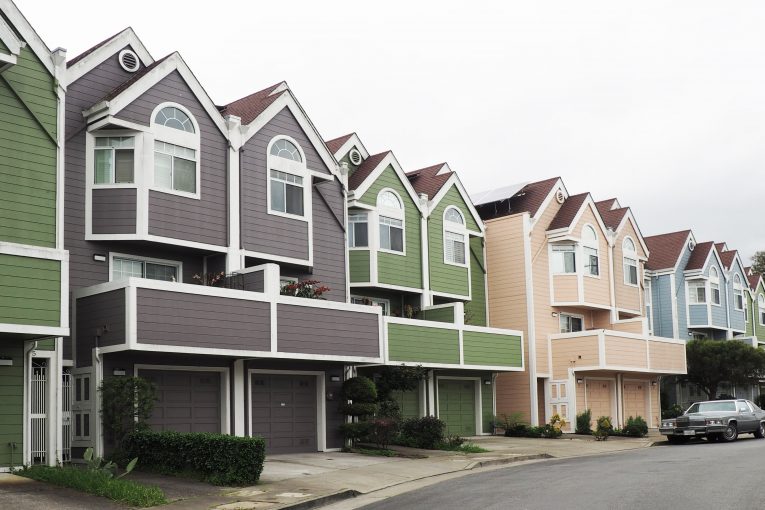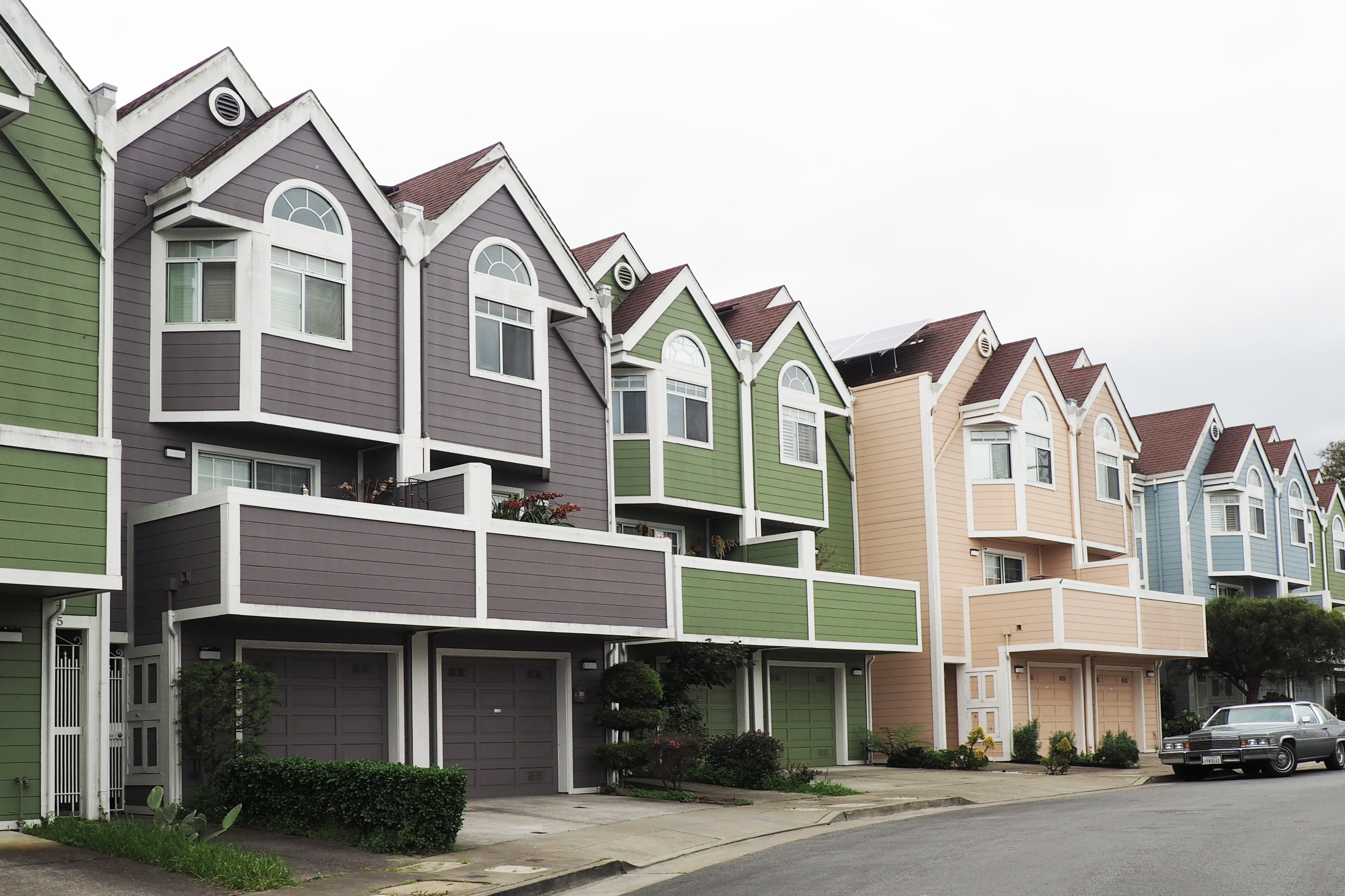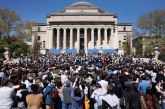

By David M. Greenwald
Executive Editor
Davis, CA – I was reading something interesting on the national level—that may also apply to local political and particularly local housing discussions.
The gist of it is that everyone says they want “bipartisanship” but the divide between the two parties may be too wide to bridge. But not only that, that assumes that both parties are operating in good faith and that one of the parties is not simply “cuckoo” (not my word choice).
That got me thinking about the local discussions. There is a belief by some that, hey, we can still make the city work in terms of housing.
Some will argue that the voters will be willing to pass basic projects that are Measure J projects if they are presented with “good” projects that they can get behind.
It makes me wonder to what extent this is even a good faith argument—and for those who are coming at this argument from an honest perspective, are they falling into the trap of magical thinking?
The 25-year history of Measure J by no means backs up the magical thinking position that is often put forth in support of the status quo. The data speaks for itself. Just two projects have ever been approved. As noted earlier this year, over the last 15 years,  the city has built less than 1000 new single-family homes.
the city has built less than 1000 new single-family homes.
So is there at this point any evidence that the system actually works?
The city is now going to embark on a General Plan update. I fully support the need for a new General Plan.
A lot of the things, that Davis frankly needs to do with its General Plan, Sacramento achieved with its newly adopted plan—elimination of single-family zoning, elimination of parking minimums, higher density near transit lines, etc.
But the biggest thing Davis needs to be able to do is actually get housing approved and then built. And it’s hard to see how a new General Plan is really going to change that problem.
To me at least the bottleneck is Measure J. Unless we can figure out a way to get projects approved through Measure J, Davis is going to have difficulties building new housing.
This is I think the most important “discussion” that we need to have. There are a group of people who believe we just need to eliminate Measure J. There are a group of people who believe we can simply amend Measure J to make it possible to get some projects approved. And then there are people who believe there is nothing wrong with Measure J, they want it to remain in perpetuity as it was originally conceived and passed in 2000.
As I have indicated I’m in the middle group.
The problem with trying to just eliminate Measure J is that there is overwhelming support for it. It’s not a feasible solution.
The problem I have with those folks in the third group—keep it as it is—is there no historical precedent for it actually working.
Measure J working at this point is premised on a whole host of “if’s.” If we have proper community dialogue. If we have the right project. If the project doesn’t lend itself to traffic scare tactics. If. If. If.
Is there a project that is being proposed that can pass a vote of the Davis voters? I guess we’re going to find out, but to be honest, I am not optimistic.
It is too easy for the perfect to be the enemy of the good.
Not that many people are willing to admit that there is no project that they are bound to accept, but by creating the perfect process and the perfect project as the hypothetical, it de facto becomes the standard.
The bigger problem I think is that if you look at some of the recent internal polls from various projects, most projects start out with nearly 40 percent in opposition. Voters will tell you that they will oppose any project—regardless.
Is that percentage of the population shrinking? Probably. But it means the margin to pass is extremely narrow.
These are like the hard-core slow growth element.
Then you have what you might call situational NIMBYs. If they think it’s going to make things worse for them, they are bound to oppose it.
The voting for DISC 2020 bears this out. The people living the closest to Mace, where the expected traffic impacts were, overwhelmingly voted against the project. The people living on the other side of town were more willing to support it. The gap between the people in East Davis and West Davis are the situational NIMBYs.
The two projects that actually passed did so in part because there were relatively few situational NIMBYs. Nishi was able to eliminate the traffic issue and there was only 40 percent opposition. WDAAC had very little in the way of traffic issues and there was 45 percent opposition.
But think about it, despite the fact that no one was going to be impacted by Nishi, for example, it still produced 40 percent opposition. (Look that the difference between that opposition and the opposition for, say, the parcel tax which didn’t crack 32 percent).
Now you look at the likely traffic impacts of any of the four remaining Measure J projects and you can ask yourself—which one of those is likely to pass?
Can we get some sort of middle path whereby we continue to protect the community from runaway growth while, at the same time, allow for there to be enough growth to meet our needs?
That should be the focus of this year. But we haven’t gotten there yet.







If one accepts the RHNA numbers as defining our needs, then I think development proposals that meet them would pass a Measure J vote. But that’s not what developers are proposing — they’re willing to chip in a few affordable and missing-middle homes toward the RHNA requirement as long as they get to build a boatload of large single-family homes that will attract well-heeled buyers from the Bay Area, and they want to build them in the same kind of car-centric transit-free designs that we know are not good for either the community or the climate. Those proposals are much less likely to pass a Measure J vote.
My experience is that there is a good deal of movement from initial proposal to what comes before council to what comes before the voters. So I do think that sort of comparison probably needs to wait.
That said, I have not seen the voters approve a single project that is believed to create traffic impacts.
Jim
The idea behind amending Measure J would be to include requirements on sustainability and social equity that address the concerns you raise. Right now there’s no real leverage on getting these concessions because the developers have to guess at what they should include. The City staff isn’t really skilled at reflecting what the citizens want for a variety of reasons and the developers get a mistaken picture of what they should aim at. Why not give them an explicit list with some incentives for complying?
The joke is on you and the people who want to have it both ways. Those like myself who see it as a complete failure and those who see it as a complete success both understand what is at stake. Those like yourself who think there is a compromise to be had are simply pissing into the wind.
Ron G
What is your proposal to prevent developments like Mace Ranch that pretty much ignored the parameters that Davisites appear to now prefer? Or like the Cannery where the City staff failed to hold developers to several critical aspects that they had initially promised?
David is correct to naively believe that Measure J will be completely rescinded by local choice. Only the state stepping in as an external agent will completely abrogate it, so we’re left with the choice to amend it.
David went along and supported renewal of J without the amendments he suggested at the time. So J was renewed until 2030. Get used to it. Amending J before then is unlikely because there are several landowners ready to roll the dice under the current rules and amending J costs a lot of political capital that will detract from a tax proposal and at least two J votes to be scheduled for 2025 and 2026.
If however, there is an attempt to amend J, I know a way to do it that is simple and proven to work.
.
David, what in your personal definition is a “good” project?
I get the sense from all your writings on this topic that multi-family housing projects are not “good.” Nor are projects where all of the units are truly affordable for young families. The only projects that seem to fit your concept of “good” are ones where the majority of the housing units are actually unaffordable for those young families with DJUSD-age children. Can you clarify what it is in your opinion that makes a project “good”?
.
The most striking example of magical thinking comes from Governor Newsom and HCD. They have created RHNA mandates for achieving affordable housing, but not provided the funding to accomplish those wishful goals. Affordable housing is a societal problem, not a local problem. It affects different local jurisdictions differently … in individual and unique ways. If our society accepted the responsibility for solving this problem and through our State government made the necessary funding available for communities/jurisdictions to apply for, the problem would be much more rapidly solved. Such a “market solution” would see communities that want to grow their population, working together with their local developers, quickly assembling and submitting their application(s) to the State for the affordable housing. Much more affordable housing would be built, and the problem of 85 unaffordable housing units having to be built for every 15 affordable housing units would largely evaporate.
So the problem of magical thinking isn’t just a local one, as you argue. It is even more prevalent at the State level … when the unfunded mandates of RHNA are formulated and passed down.
“I get the sense from all your writings on this topic that multi-family housing projects are not “good.” Nor are projects where all of the units are truly affordable for young families. ”
Interesting.
You completely missed or ignore this: “A lot of the things, that Davis frankly needs to do with its General Plan, Sacramento achieved with its newly adopted plan—elimination of single-family zoning, elimination of parking minimums, higher density near transit lines, etc.”
Elimination of single-family zoning. Higher density.
Isn’t that supporting multi-family and affordable housing. Isn’t one of the main reason to support the elimination of parking minimums because it allows for housing to be more affordable?
David, the provisions you reference do nothing to address the 85 unaffordable for every 15 affordable ratio. The goal of a “good” project should be 100% affordable.
“The goal of a “good” project should be 100% affordable.”
That is your subjective judgment. One of the points I have tried to make to you in response to that claim is that projects have to actually be able to be built. A second point I make to you in response is that contrary that we have all the “unaffordable” housing that we need, that assertion is actually not true. We have a very limited stock of available housing that gets purchased up almost immediately upon entering the market. Those two points have led me to a very different conclusion than the one you have reached.
Matt
I agree that the state seems to live in its own fantasyland on this issue. The solution is relatively simple and probably would not cost the state coffers much incrementally each year. That’s to give local governments the lion’s share of incremental property tax revenues from a new development. That’s why redevelopment agencies were so popular (and unfortunately abused). And perhaps why the state’s revenues have increased so much over the last decade. (Researching state property tax revenues over the last two decades could be useful.)
Richard, while I agree that would be a step in the right direction, it wouldn Do anything to address the unaffordable vs. affordable ratio problem.
The two proposals for the future Davis before us miss by far two key topics of climate change and affordable housing. So the existing process is not encouraging producing what many of us in our community wish to see.
Yet so far, no entity has publically and boldly stated no on the ground of either climate change or housing affordability.
Both projects are car centric repititions of the past. proposed to be housing that meets future needs. It is a future for some but not for me.
Both projects of that Davis future purposefully plan to house less than the previous 25% of the very low and low income rental housing. The lower the income we house the higher % of low income minorities we serve.
In a world searching for diversity imagine voting for two projects which purposefully plan to accomodate fewer minorities in our town.
When Richard Rothstein was here he pointed out the role of cities and citizens in accepting segregation policies.
Did no one listen? Does any entity oppose?
I am now in the camp of those who wish to encourage better planning through a revision exemption with these two topics in mind
My own thoughts and not representative of either Neighborhood Partners LLC or Twin Pines Cooperative Foundation
Magical-no impact thinking?
A bit about Nishi/Promenade:
Hindsight and more: I moved to town shortly after the Nishi 1.0 vote. In this forum I suggested that a parking structure be built south of the railway tracks and ideally directly on top of I-80 as part of the interchange reconstruction project. This would both enable commercial facilities at Nishi and would reduce automobile impacts on Downtown. Three years later the peripheral parking idea was floated as part of Downtown discussions.
In December 2017, Ash Feeney promised the BTSSC that they would have a chance to provide input on Nishi again. This didn’t appear in the Development Agreement and I very recently had to push for this to happen for a future BTSSC meeting as an informational item.
In 2018 the city council unanimously put the Nishi annexation on the ballot, with a visual of an undercrossing but the text of a grade-separated crossing. Voters supported it, but at the end of the year Union Pacific rejected an undercrossing. The city council should have never brought the project to voters without a firm commitment from UP about an undercrossing or suitably safe and enjoyable overcrossings.
There was no official nor social media announcement about this until the final proposal for what’s now called Promenade appeared in May 2023, on the city’s website – but without any announcement. Shortly thereafter the City Council – despite overwhelming opposition by community members – sent a letter to Caltrans supporting the idea of mitigation funding from the proposed I-80 widening to be used for the overcrossing from Promenade to UC Davis Campus.
In September 2023, I was told by staff that they expected most of the bicycle and pedestrian traffic between Promenade and campus to be via the existing Putah Creek Parkway at the east end of the project space. This is because the project side of the overcrossing will have an 8% gradient, steeper than Dave Pelz and steeper than Pole Line, and about as steep as the anecdotally-wildly unpopular Olive Drive to Pole Line connector. Given the typical cycling model share of students living close to campus, it seems clear that well over 1400 people from Promenade will attempt to travel towards campus every morning via Putah Creek, joining many others coming from Olive Drive and South Davis, mixed in with people walking and using other mobility devices. Coming back from campus? It’s a bit more unclear: The campus side of the overcrossing will have a gradient of 4.2%: , what this might mean is that people will come back this way as it’s relatively do-able in terms of steepness. On the down slope to home it’s a different issue: The current design only has bike separation from the traffic lane by a single line of paint or a slightly wider painted buffer. Combined with the gradient, the lack of cycling experience in some students and the bad brakes on many bikes used for students….this doesn’t look good! There’s no resiliency if there’s an issue. Magic won’t stop these negative impacts, and I’m not even mentioning the car travel between Promenade and campus and the rest of the city. Right now the plan is for up to 700 cars to be parked there, plus more for visitors
(I’m not making apologies for my claims being somewhat speculative: The transportation consultancy tasked by the developer – saw this in a October 2020 letter from UC Davis to the city manager – has as far as I know been promising some kind of data about projected flows for over 3 years.)
Promenade will also be the highest concentration of City residents in a very noisy location.
I’ll add this: Imagery is important. We need to not build homes like the ones in the photo above. The whole street dominated by automobile birthing passages. (Let’s not forget that the favorite, oft-presented photo of David’s is or was of a wet 2nd St Downtown, somehow void of cars.) .